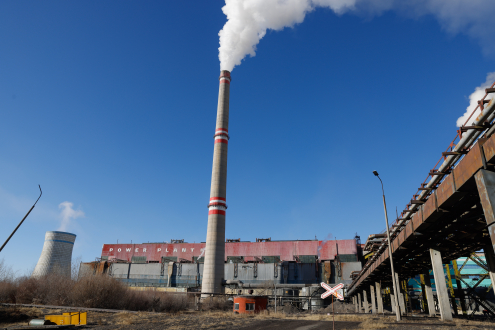On July 9, Prime Minister L. Oyun-Erdene announced the Energy Reform at the Mongolian Economic Forum, stating, "We will liberalise the energy sector and deregulate prices. We will establish the legal framework to make energy projects the most profitable businesses." Below is a timeline of the policies and decisions made over the five months since the Prime Minister’s announcement, outlining the progress of the energy reform process. Firstly, the government included "transitional costs to support the timely implementation of the energy sector tariff reform, market liberalisation by increasing competition, creating opportunities for private sector investment, and establishing a stable financial and economic foundation for the sector" in the 2024 budget amendment.
August 7
The Cabinet of Ministers established a National Committee to Manage Energy Reform, approved its composition, and appointed the Deputy Prime Minister for Foreign Trade and Investment as its chair. National Committee for Energy Reform: Reform Strategy
• Fully meet domestic demand by 2030.
• Become an energy exporter by 2040.
• Become a net-zero energy producer by 2050.
August 21
The Cabinet meeting announced the creation of a Subcommittee to oversee energy reform, price and tariff changes, and large mega projects. The Subcommittee stated that its policy reform is "planned for the long term in line with Mongolia’s goal of becoming an energy exporter. In the medium term, it will boldly implement energy sector reforms. It will marketise, improve efficiency, change the structure of state-owned companies, and attract investment. The first step is tariff transition." It also announced that tariffs would be revised starting November 1.
September 5
A working group was formed by the Parliament Speaker to revise the Law on Energy, the Law on Renewable Energy, the Law on Energy Conservation, and related legislation. The working group stated that it would reform the laws within the framework of five main objectives: creating competition on the producer side, increasing private sector participation, accelerating the green transition, correcting the vertical management structure, and improving the independence of the Energy Regulatory Commission.
October 30
The National Committee presented its position, stating, "Energy reform is not just a change in tariffs, but a comprehensive issue. The transition from today’s brown energy to green energy, the transfer of the state monopoly in this sector from the state to the private sector, the shift from a centralised system to a distributed source or decentralisation system, and the reform of energy technology all together constitute energy reform in a comprehensive context. We are making decisions based on international experience when implementing price and tariff changes, aiming to minimise the pressure on citizens and businesses."
November 15
The Energy Regulatory Commission decided to bring the average electricity tariff to the real cost and set it at MNT 280. The energy reform process is unfolding in this way. Apart from the broad and ambitious goals of transitioning to green energy, transferring the state monopoly to the private sector, decentralising the system, and becoming an energy exporter, there is rarely a clear concept, set goals, steps, timeline, or the required funds. Looking ahead, the most obvious change is that the price of heat will increase starting May 15 next year. The working group for revising energy sector legislation in Parliament is also expected to submit a revised bill within the framework of its five objectives. Additionally, the National Energy Reform Committee reported holding an extraordinary meeting to review the structure, organisation, governance reforms, and market models of the energy sector. This suggests that the government may link its energy reform with the legal reform of state-owned companies, and focus on structural changes that suit the specific characteristics of state-owned companies in the sector.
"CLASSIC" ENERGY REFORM AND 11 KEY FACTORS
Here, we present the perspective of an expert on energy reform regarding how it is implemented in other countries, successful experiences, and key considerations. The research and recommendations of Mary Louise Vitelli, an experienced lawyer specialising in governance and law related to electricity, energy, and mining, provide valuable insights into Mongolia’s energy reform. In connection with the upcoming energy reform in our country, the United States Agency for International Development (USAID Mongolia) invited Mary Louise to Mongolia in October. She presented the results of her research on energy reform, her analysis of the situation in the Mongolian energy sector, and held a meeting and seminar for relevant energy sector experts to provide advice on how to draw up a reform plan based on it. Let us highlight the main points to be considered in Mary Louise Vitelli's report on classic energy reform and recommendations. Readers, please compare them with the processes taking place in our country and draw your own conclusions.

Mary Louise showed in her presentation that the classic energy reform consists of 11 factors. These include market-commercial reform, legislative reform, institutional reform, more capacity, state-owned enterprise reform, decentralization, improved governance, strengthening the human resource capacity of the sector, attracting new investment, fiscal reform, and technical modernization reform. From these factors that are inevitably addressed in energy reform, countries assess their own situation and identify their pressing problems, and based on this, determine and select the basic reforms to be implemented first, according to the conditions and characteristics of the energy sector and economy. If the foundation is laid correctly, the remaining reform issues are resolved accordingly. To lay the foundation for reform, the concept, scope, duration, and expected outcomes must be clear, measurable, and carefully calculated. The concept should address key issues such as accessibility, safety, reliability, affordability, governance, and investment. The scope of the reform should be clearly defined in terms of geography, sector, ownership, efficiency, and related industries. For instance, it is important to clarify whether the energy reform will be implemented at the national level, within the capital city of Ulaanbaatar, or at the regional level. It is also crucial to determine whether the reform will affect only one sector-such as production, transmission, or distribution-or all of them. The ultimate goal of the reform should be to increase capacity, enhance technical, commercial, and governance efficiencies, and reduce operational concentration while supporting the global trend of energy transition. It is essential to “envision” the expected outcomes.

A key factor influencing measurable results is the set time frame. This is why it is critical to calculate and announce the required time for effective and profitable reforms. Based on the experience of many countries, an average duration of 5 years is considered most suitable. Additionally, political will, the conditions for addressing social security issues, and ensuring a reliable energy supply throughout the reform process are crucial for initiating and completing energy reforms. In essence, proper preparations are necessary. But the question remains: are these preparations being made in our country? Reform without preparation can be likened to hammering nails without a hammer. How well have we prepared? It is essential to consider all of the above, conduct thorough research and analysis, and create a comprehensive plan that answers the questions of what, who, when, how, and what to achieve. Mary Louise Vitelli emphasised that, based on this, the basic reforms will be identified, and the path to successful energy reform will be smoothly paved.
The pillars of Mongolia's energy reform are institutional, state-owned enterprise, fiscal, and market-commercial reforms
Based on the current situation and challenges in Mongolia's energy sector, Mary Louise Vitelli identified four of the 11 reform factors as essential: institutional reform, state-owned enterprise reform, fiscal reform, and market-commercial reform. Let’s examine why each of these is critical.

Institutional Reform: This primarily concerns the role of the government within its rights and responsibilities. For instance, it involves ensuring that the government does not influence the decisions of the Energy Regulatory Commission regarding prices and tariffs. Mary Louise concluded that while the Energy Regulatory Commission has the authority to set tariffs, in practice, the government controls prices and directly manages the energy regulatory agencies. She emphasised the need for a functional analysis of energy regulatory agencies, starting with the policy making ministries and implementing bodies. Only then can the sector make real decisions that are independent of political influence.
State-Owned Enterprise Reform: Second, since more than 90 per cent of energy operations are carried out by state-owned enterprises, with 66 per cent of their shares held by the Ministry of Energy and 34 per cent by the State Property Policy and Regulation Agency, it is crucial to carry out a reform of state-owned enterprises. The objectives of this reform will focus on improving operational transparency, closing insolvent or unprofitable assets, increasing technical efficiency, and reducing state intervention. To achieve this, steps will be taken to establish a management system based on merit, maintain detailed records of assets and liabilities, and revise commercial standards to guide reform decisions.
Fiscal Reform: Third, fiscal reforms will focus on debt restructuring, tariff adjustments, and the consolidation of payments under Power Purchase Agreements (PPAs). This involves aligning tariffs with the actual cost of services, promoting an increase in renewable energy capacity, setting tariffs that consider vulnerable groups, and ensuring transparent financial reporting. Until recently, energy was purchased at tariffs below its actual cost. Additionally, the Renewable Energy Law includes a provision that sets tariffs in US dollars, which further complicates the fiscal situation.
Market and Commercial Reform: Finally, a comprehensive market reform will be implemented. This will involve the decentralisation and deconstruction of the sector at various stages, including production, distribution, and transmission. A market principle suitable for the specific characteristics of the country’s energy sector will also be selected, including the current model with a single buyer. In this context, it is also recommended that the membership of the boards of directors of state-owned power companies be expanded, certain decision-making powers be revoked, and the possibility of transferring heat supply issues to the provinces be explored. It was also emphasised that for the successful implementation of these four reforms, attention must be paid to climate change, the responsibility for developing renewable energy, new construction, tourism, and consumers in the mining sector, as well as heat decentralisation.
During the energy reform process, it is essential to involve all relevant parties, including policymakers, implementation officers, sector operators, investors, labour unions, the scientific and educational community, non-governmental organisations, financiers, citizens, businesses, and industry. In other words, cross-sectoral cooperation and support from multiple stakeholders are vital for the success of the reform.
Researcher Mary Louise Vitelli concluded that the risk of a crisis in our energy sector is very high due to the outdated transmission network, old power plants, and heat demand exceeding market capacity.
If energy sector reform is not initiated with coherence, evidence, and research, it will negatively affect not only technology and economics but also climate change and employment. It was also warned that due to incomplete start-ups and inaccurate calculations, some projects could get stuck in the implementation phase, and other reforms may be delayed. The most important point is that the energy sector is a “vulnerable” sector, influencing the economy and the lives of a country’s citizens in all aspects. That is why the example of Cuba "just yesterday" showed us that if the next step in energy reform is not based on real research and analysis, it will not only drag down other sectors but also put the country in a difficult situation. However, successful experiences of energy reform can be studied in countries like Kazakhstan, Tajikistan, Pakistan, Georgia, and Brazil.

















